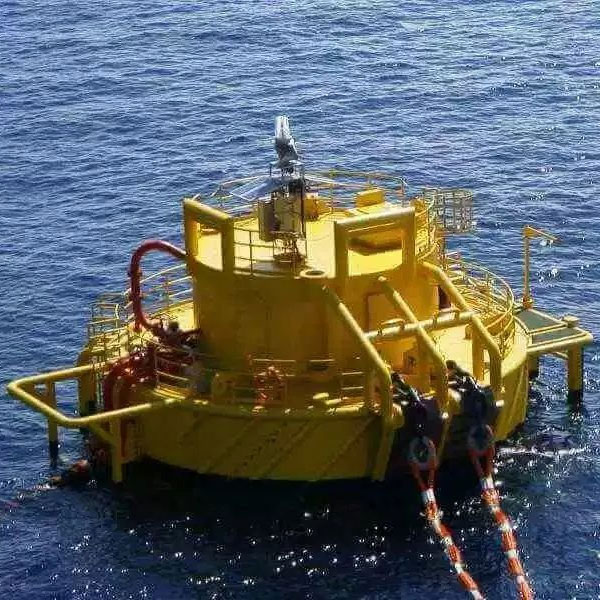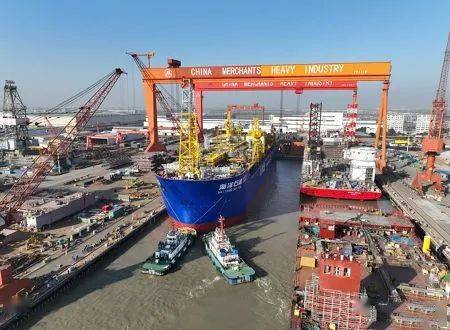Exploring three categories of single-point mooring systems
In the realm of offshore oil and gas field development, Single-Point Mooring (SPM) systems play a pivotal role in ensuring the efficient and safe operations of Floating Production Storage and Offloading (FPSO) vessels. These systems come in three primary categories based on their connection to the FPSO’s hull: Floating Hose Mooring, Tower Mooring, and Turret Mooring. Let’s delve into each category to unravel their significance and applications.
1.Floating Hose Mooring
Floating Hose Mooring, also known as CALM (Catenary Anchor Leg Mooring), involves anchoring a buoy in offshore areas away from the coast. These buoys serve as mooring points for oil tankers to load and unload gases or liquids. The buoys act as connecting points between underwater pipeline systems. Their primary function is to transfer onshore or underwater oil and gas resources to the moored oil tanker.
Floating buoys are typically composed of multiple watertight compartments. In case one compartment sustains damage due to external forces, the remaining compartments still provide sufficient buoyancy. There are two common types of floating buoys: the freely-rotating Turntable and the Tower Buoy.

Single Point Mooring Systems
2.Tower Mooring
Tower Mooring involves fixing a rigid tower structure to the seabed. This tower serves as a permanent mooring point for FPSOs to load and unload oil and other products. The key feature of Tower Mooring is its rigidity, which allows for multiple riser systems to be accommodated. This category includes:
Yoke System: The most common type of Tower Mooring, where a Y-shaped structure connects the FPSO and the tower.
Submerged Tower System: Similar to conventional Tower Mooring, but the tower is completely submerged underwater, minimizing the impact of waves and tidal variations.
Mooring Line System: Similar to conventional Tower Mooring, but mooring lines replace the Y-shaped structure, reducing complexity and enhancing cost-effectiveness.

FPSO
3.Turret Mooring
Turret Mooring systems are highly versatile and widely used due to their ability to accommodate FPSOs with significant weight and buoyancy. Turret Mooring involves a turret, which can rotate freely, allowing the FPSO to align itself with the minimum force direction. This reduces the total mooring force required. There are two main types of Turret Mooring systems:
Internal Turret: This type is embedded in the bow of the FPSO. It allows for a large turret diameter, providing enough space for equipment and pipeline arrangements. However, the location of the internal turret affects the FPSO’s wind profile.
External Turret: This system is similar in functionality to the internal turret but is installed outside the FPSO’s hull. It offers more flexibility and ease of installation, and the number of risers is significantly lower than with internal turrets.
Application and Innovation
The choice of Single-Point Mooring system depends on factors such as water depth, environment, operational needs, and budget. Over 70% of FPSOs worldwide employ Turret Mooring systems, particularly in regions such as the North Sea, Gulf of Mexico, and South China Sea. These systems seamlessly integrate mooring, fluid transfer, power, and control functions.
Haihao Group has been at the forefront of providing solutions for FPSO and marine industries, with an emphasis on innovation, reliability, and safety. As we navigate the complexities of offshore operations, our commitment to excellence remains unwavering, ensuring that the vessels’ integrity and efficiency are upheld throughout their service life.

